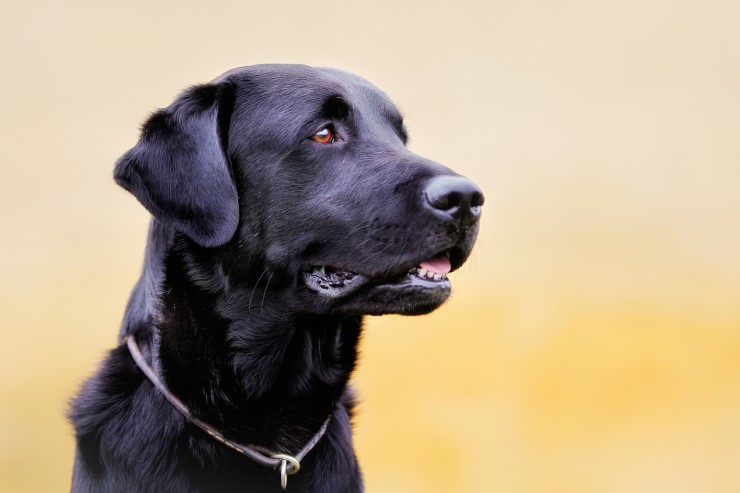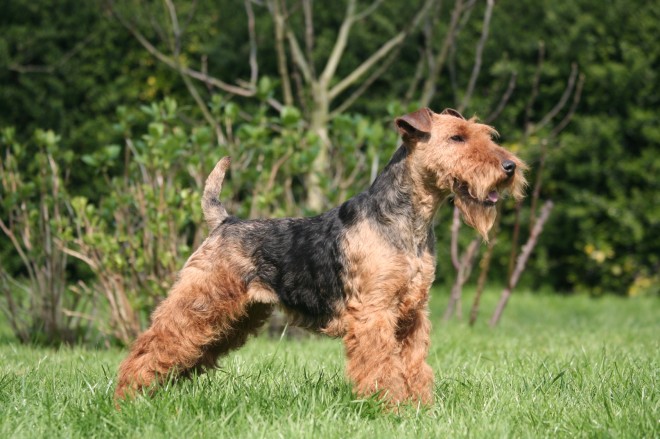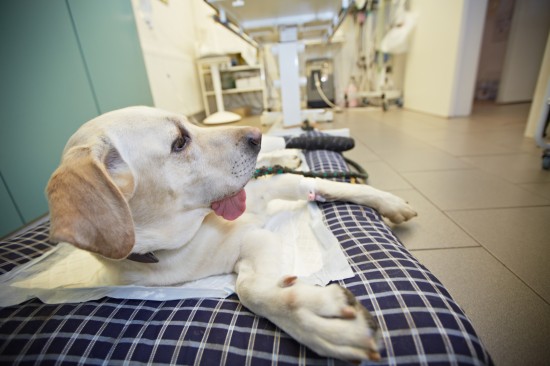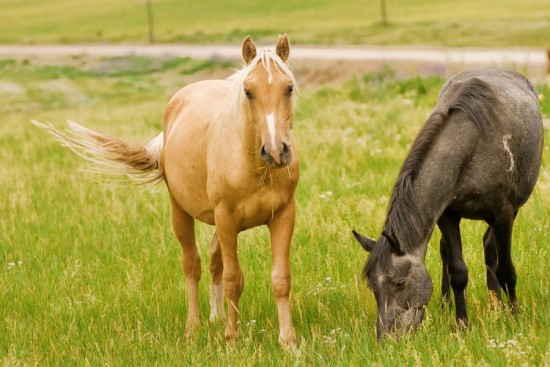
Dogs are naturally pack animals, and instinctively they know that for the pack to function properly there must be a pack leader. If left on their own, dogs will work out this arrangement themselves, by posturing and even fighting to establish their position in the pack.
If a new dog is then introduced to the pack, the posturing and fighting will begin again, so that every dog knows exactly where he stands.
It is very important that we establish ourselves as pack leaders for our dogs, especially with breeds that are already predisposed to becoming dominant or aggressive.
The way that you interact with your dogs may be setting you up for success or failure, so you need to understand the way that a dog thinks, and how to modify your actions to place yourself firmly at the head of the pack without being aggressive or hurting your dog.
The first thing you need to understand is how a pack leader acts. Dogs are very capable of reading our emotional and mental states. If you are angry, your body language will relay that to your dog and he will respond with cowering or attempting to soothe or pacify you. They are masters of reading human body language.
The pack leader must be calm, yet confident and assertive. If you have seen Cesar Millan in action, you may have an understanding of how this comes across to the dogs. You do not act angry or aggressive towards them, in some dogs this might even cause a defensive reaction which could be very detrimental to your relationship.
To help put you in the right state of mind think of something big that you've accomplished, something that you're proud of. Maybe it was a goal that you've been working on. Something difficult that you overcame. A challenge that you conquered. Think of how that made you feel. Strong, successful, confident. These are the emotions you want your dog to sense in you. Calm strength and confidence.
You want your body to be telling your dog, "Hey, I'm a powerful and confident pack leader. I make the right decisions and can offer you a very stabile and happy relationship, so respect me as your leader!"
This doesn't mean you need to start posturing and walking around your dog with stiff knees, it's a subtle change in your body language that the dog will pick up on and understand. It will also affect your voice, so be aware of your emotional states! Your tone of voice is extremely important.
The correct tone of voice for praising voice is soft, happy and spoken in high pitched tones. For training or commanding the voice is firm, assertive and spoken in a normal tone. A correction for bad behavior is a deep, powerful growled tone of voice.
If you had a bad day at work, if you're unhappy or just having an off day than DON'T choose that time to work with your dog! You need to go take a hot shower, and while you're in there close your eyes and start thinking about the best thing that has happened to you all year.
Think about your successes and the things in your life that make you happy. See those things in great big pictures in your mind and make those pictures bigger and brighter until the feelings of success, strength and happiness start to fill your whole body. THEN you can go work with your dog. You'll be in the right state of mind to accomplish a lot and make your dog feel safe and happy.
A basic rule for pack leadership is setting boundaries and limitations for your dog, both inside and outside your home. Using a strong, firm, confident voice and body language, correct your dog's mistakes by saying something like "NO!" or "BAH!", whatever sound or word that you feel most comfortable using.
You must speak very firmly, holding your head and shoulders up, your body upright and strong. Your voice should be deep and powerful, a commanding growl.
Never use your dog's name as a correction, you will confuse him badly. We often use names for calling or in praise, so using it as a correction will add a negative connection to it in his mind and may damage your relationship as well as future training sessions.
I prefer to use a deep guttural "BAH" sound. The "ah" sound becoming a very deep, resonating bark from deep down in your gut. This is not a sound I use in my conversations with anyone else, so when I do use it, my dogs know that I'm talking to them and there is no confusion at all!
To use the correction properly you need to be aware of what your dog is doing. Say your dog is about to jump up onto the counter to sniff for food. This is a bad behavior so you abruptly growl "BAH!" very firmly, from deep in your chest yet loud enough that the dog can't ignore you. Speak it sharply, abruptly and fiercely. It's a correction for bad behavior and must be recognized as such.
If the dog proceeds to jump up, stomp your foot very loudly on the ground and say "BAH!" again, with much more force. The dog should quickly return all four feet to the floor. Anytime he tries to return to the bad behavior you should quickly correct him with a firm "BAH!" to remind him that it is forbidden.
The stomp should only be used if the voice command fails. You want your dog to listen to your voice, but for dogs that already see themselves as leader you sometimes need a loud sound to startle them into listening.
Dogs instinctively hate to be surprised. Surprises in the wild usually meant sudden injury or death, so a loud bang or thump will often make a dog jump out of a sound sleep and look around for danger.
You don't want to abuse this instinct, so don't use the stomp unless the dog is very resistant to voice commands. Most dogs will hesitate when you bark "BAH" at them, and that's exactly what you want to focus on. That hesitation means they are mentally stopping, even for just a second, to consider their role and whether they need to submit to you or not.
Timing is crucial! You must correct your dog at the exact moment the dog is doing the wrong thing so he can make the connection between his error and your sharp correction.
If used properly your dog should start responding to your corrections with signs of submission. Watch your dog so you can start recognizing and interpreting his responses correctly.
A submissive dog will often carry his head down, ears loosely back, and have his tail down. If you speak to them, or look directly into his eyes, he may lick his lips, roll over or wag his tail. Watch that tail however, a low set wagging tail is a good submissive tail, but a tail held up high, even if it's wagging a little is a bad sign.
Dominant body language towards you is not allowed and should be quickly corrected. This type of behavior includes stiff posture, staring with ears forward, baring teeth, growling or snapping, hackles up, tail up, jumping up or standing over you.
If you're sitting and watching tv and your dog comes up and starts staring at you while wagging its tail and maybe whining, look right at it. If his ears go back and the tail wags faster, he's not being aggressive, he probably just needs to go to the bathroom or wants attention. But if he keeps his ears firmly erect, his tail moving stiffly, and holds your gaze, that's bad! He's telling you he's the boss and that can't be allowed!
You must be the pack leader so you must remain dominant.Dogs are instinctively pack animals and even a well behaved dog may occasionally challenge you to see if you are losing your authority. If you don't remain consistent and always enforce the rules your dog will start to push those rules to the limits and will eventually start taking on a more dominant role, pushing you back into a submission one.
Maintain your rules and your dog will live a much happier and healthy life as a loving and responsive companion.
Dog lovers and Bulldog Abbie fans can find additional free guides and information on our website at http://www.bulldogabbie.com
 How To Protect Your Dog Against Canine Hepatitis
How To Protect Yo
How To Protect Your Dog Against Canine Hepatitis
How To Protect Yo
 How To Keep A Welsh Terriers Coat Looking Good
How To Keep A Wel
How To Keep A Welsh Terriers Coat Looking Good
How To Keep A Wel
 Dogs And Hypoalbuminemia
Dogs And Hypoalbu
Dogs And Hypoalbuminemia
Dogs And Hypoalbu
 Would Your Horse Make The Perfect Companion?
Would Your Horse
Would Your Horse Make The Perfect Companion?
Would Your Horse
 Tips On How To Keep A Briards Coat Looking Good
Tips On How To Ke
Tips On How To Keep A Briards Coat Looking Good
Tips On How To Ke
Copyright © 2005-2016 Pet Information All Rights Reserved
Contact us: www162date@outlook.com